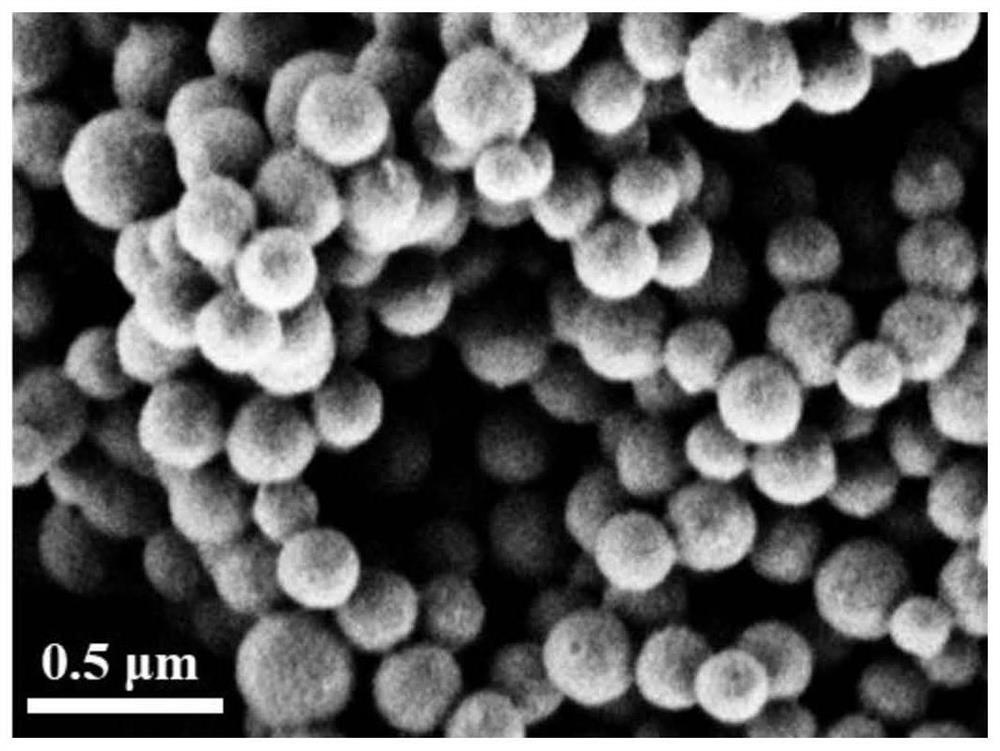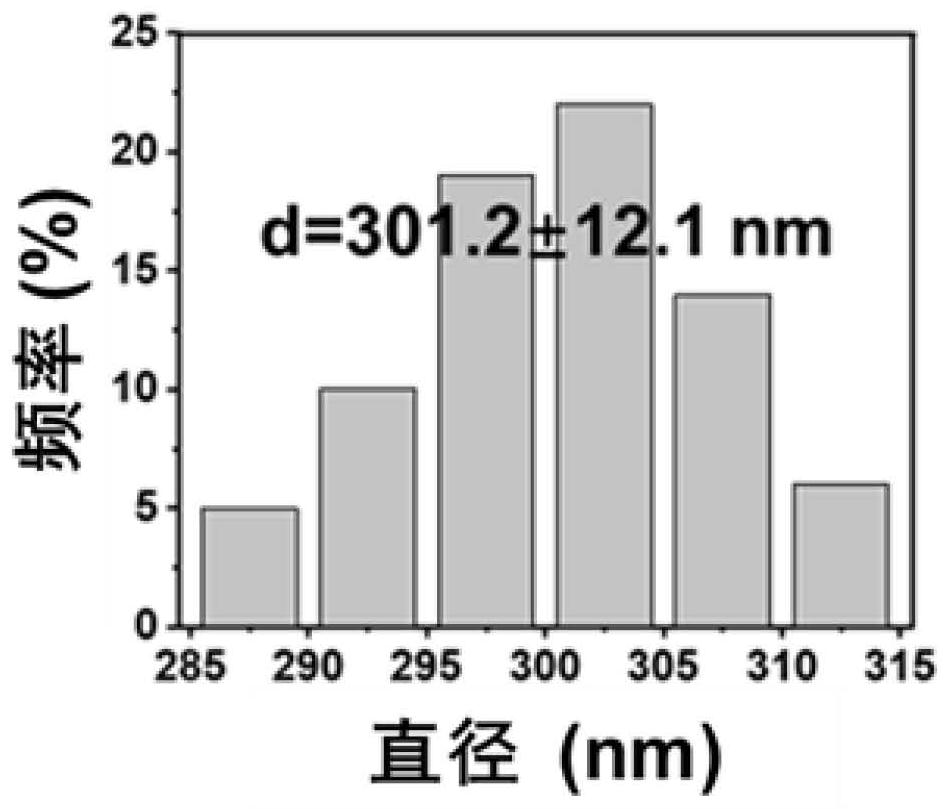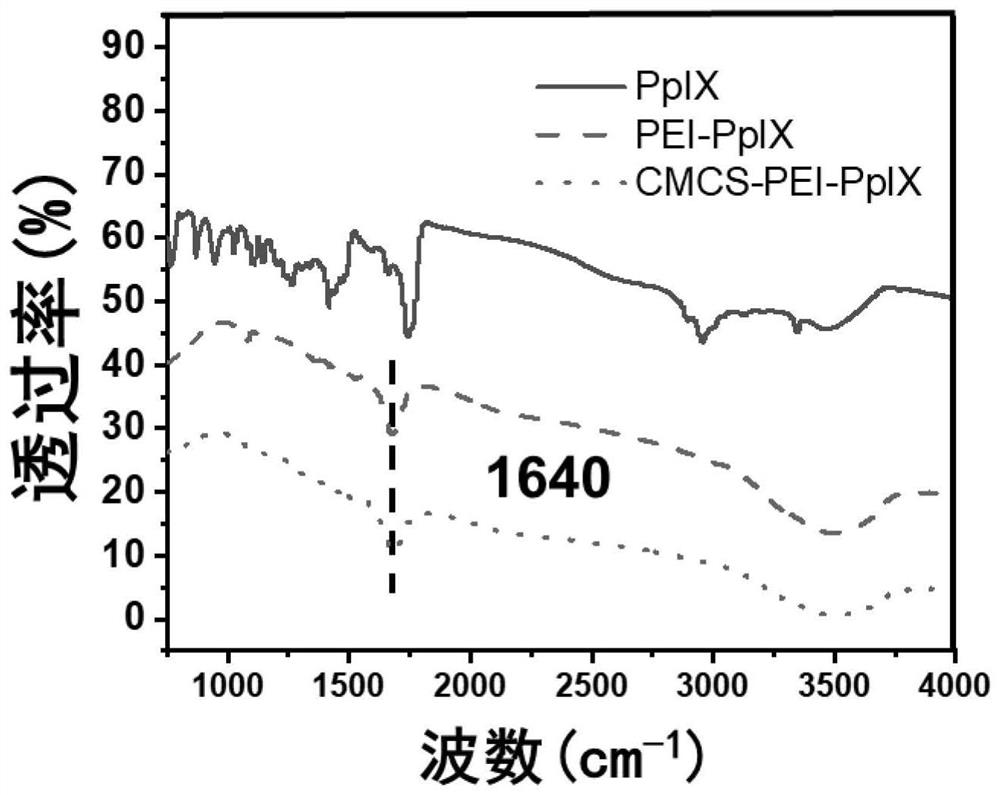Chitosan nanoparticles with high stability and high biological safety as well as preparation method and application of chitosan nanoparticles
A biosafety, chitosan nanotechnology, applied in the field of nanomaterials and biology, can solve the problems of poor water solubility of photosensitizers and weak cell interaction, and achieve strong bactericidal effect and high anti-microbial activity.
- Summary
- Abstract
- Description
- Claims
- Application Information
AI Technical Summary
Problems solved by technology
Method used
Image
Examples
Embodiment 1
[0035] Embodiment 1 Preparation of CMCS-PEI-PpIX nanoparticles
[0036] Dissolve 2 g of PEI and 10 mg of PpIX in 10 mL of ultrapure water. The solution was transferred to a 25mL hydrothermal reactor and reacted at 120°C for 8h. After cooling to room temperature, it was dialyzed with ultrapure water with a molecular weight of 1kDa for 1d, and passed through a 0.45μm filter membrane to obtain PEI-PpIX.
[0037] Add 5 mg CMCS and 50 µL EDC to 5 mL of freshly prepared PEI-PpIX solution. The mixture was magnetically stirred at 35 °C for 16 h. After the reaction, the CMCS-PEI-PpIX nanoparticles were obtained by dialysis with deionized water (MWCO=10kDa) for 1 d and passing through a 0.45 μm filter membrane.
Embodiment 2
[0038] Scanning electron microscope observation of embodiment 2 CMCS-PEI-PpIX nanoparticles:
[0039] The filtered CMCS-PEI-PpIX nanoparticles were diluted with deionized water, 10 μL was dropped on a clean silicon wafer, and observed with a scanning electron microscope (Ultra Plus; Zeiss Ltd., Germany), as shown in figure 1 shown. The result of transmission electron microscope observation shows that the nanoparticles have a nearly spherical structure and are evenly distributed.
Embodiment 3
[0040] Example 3 CMCS-PEI-PpIX Nanoparticle Size Distribution Detection
[0041] measure by scale figure 1 The diameter of the nanoparticle obtained by scanning electron microscope observation, and its particle size distribution are counted, such as figure 2 As shown, it shows that the average particle diameter of the nanoparticles is about 300nm;
PUM
| Property | Measurement | Unit |
|---|---|---|
| The average particle size | aaaaa | aaaaa |
| Average molecular weight | aaaaa | aaaaa |
Abstract
Description
Claims
Application Information
 Login to View More
Login to View More - Generate Ideas
- Intellectual Property
- Life Sciences
- Materials
- Tech Scout
- Unparalleled Data Quality
- Higher Quality Content
- 60% Fewer Hallucinations
Browse by: Latest US Patents, China's latest patents, Technical Efficacy Thesaurus, Application Domain, Technology Topic, Popular Technical Reports.
© 2025 PatSnap. All rights reserved.Legal|Privacy policy|Modern Slavery Act Transparency Statement|Sitemap|About US| Contact US: help@patsnap.com



